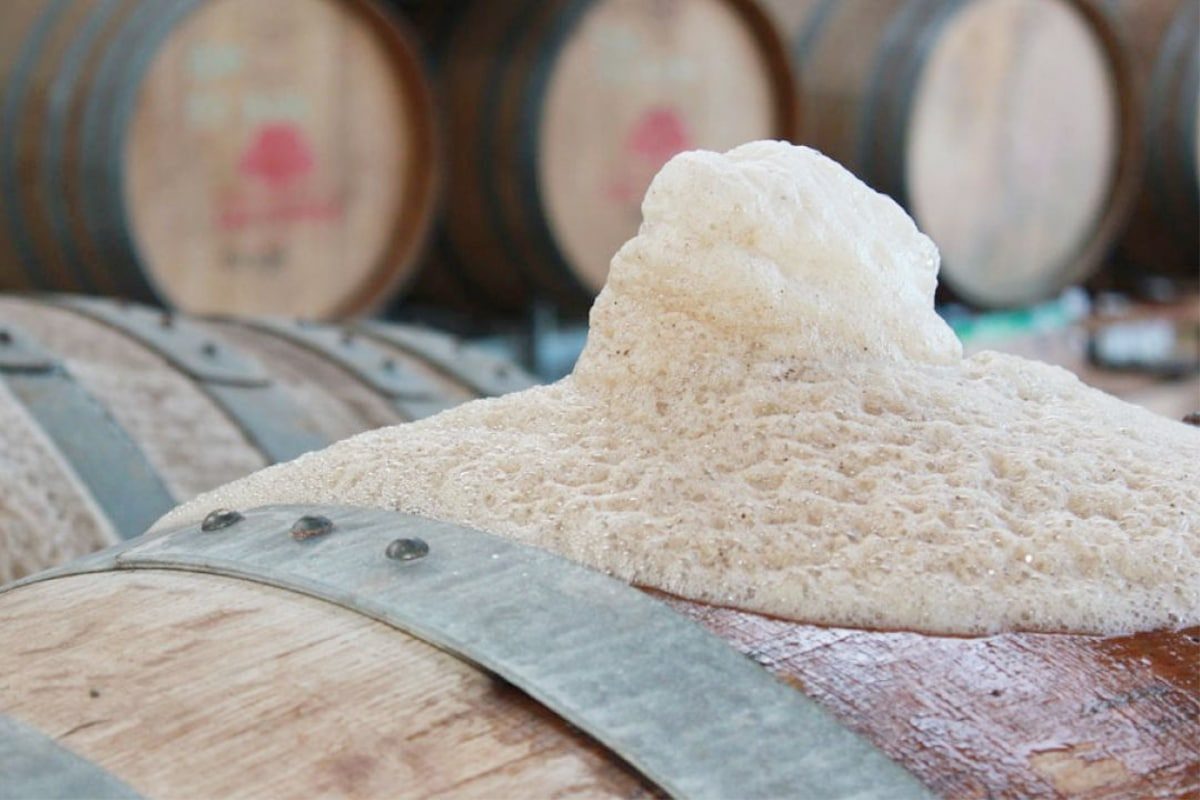
What Is The Role of Yeast in Beer Fermentation?
Yeast, a microorganism essential to the brewing industry, is the powerhouse behind beer fermentation. This single-celled fungus transforms simple sugars into alcohol and carbon dioxide through a process known as fermentation. Beyond these primary byproducts, yeast also produces a variety of flavor and aroma compounds that give each beer its unique character. The role of yeast extends from the initial wort inoculation to the final stages of beer maturation, influencing the taste, aroma, and overall quality of the final product.
Understanding the complex and multifaceted role of yeast in the beer fermentation process can help brew high-quality beer with consistent and desirable characteristics. This article explores the biological functions of yeast, the fermentation process, yeast management techniques, and the impact of different yeast strains on beer styles.
Complete Guide

Understanding Alcohol Content in Beer
Yeast is a single-celled microorganism that belongs to the fungi kingdom. These microscopic organisms are incredibly diverse, with thousands of species identified, each with unique characteristics and metabolic capabilities. In the context of brewing, the most commonly used species is Saccharomyces cerevisiae, known for its exceptional ability to convert fermentable sugars into alcohol and carbon dioxide. Yeast cells are typically oval or spherical and measure between 3 to 5 micrometers in diameter. Despite their tiny size, yeast cells are metabolic powerhouses, capable of producing a wide array of compounds that significantly influence the flavor, aroma, and mouthfeel of beer.
Yeast operates primarily through the process of fermentation, where it metabolizes sugars derived from malted grains into ethanol (alcohol) and carbon dioxide. This biological process is central to brewing, transforming a sugary wort into beer. Beyond the basic conversion of sugars, yeast produces a variety of secondary metabolites, including esters, phenols, and higher alcohols, which contribute to the complex flavor and aroma profiles of different beer styles. The selection of specific yeast strains allows brewers to tailor the fermentation process and achieve the desired sensory characteristics in their beer.
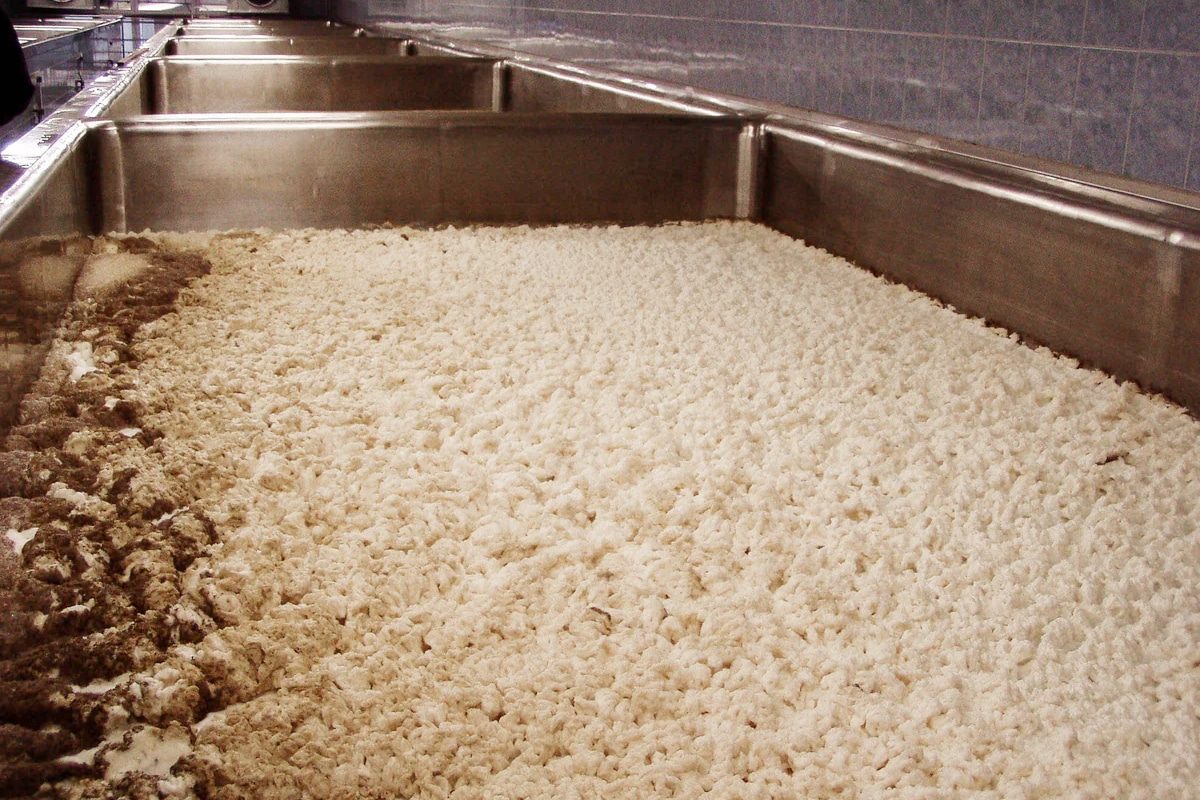
Biological Functions of Yeast
Yeast Metabolism
Yeast metabolism is the central biological process that drives beer fermentation. At its core, yeast metabolism involves the breakdown of sugars to produce energy, alcohol, and carbon dioxide. This metabolic process can be divided into two main pathways: glycolysis and fermentation.
Glycolysis
- Initiation: Glycolysis begins when yeast cells uptake glucose molecules from the wort, the liquid extracted from the mashing process of brewing. This process occurs in the cytoplasm of the yeast cells.
- Breakdown of Glucose: In a series of ten enzymatic reactions, one molecule of glucose is split into two molecules of pyruvate. This breakdown process generates a small amount of energy, captured in the form of ATP (adenosine triphosphate).
- Production of Intermediate Compounds: Alongside ATP, glycolysis produces intermediate compounds like NADH (reduced nicotinamide adenine dinucleotide), that aid in further metabolic processes.
Fermentation
- Anaerobic Conditions: In the absence of oxygen, yeast cells shift to anaerobic fermentation, a condition typical during beer fermentation. Here, the pyruvate generated from glycolysis is converted into ethanol (alcohol) and carbon dioxide.
- Alcohol Production: The conversion of pyruvate to ethanol involves the removal of carbon dioxide, forming acetaldehyde, which is then reduced to ethanol by the enzyme alcohol dehydrogenase.
- Carbon Dioxide Production: The carbon dioxide produced during fermentation contributes to the carbonation of the beer, creating the effervescence that characterizes the beverage.
This metabolic transformation not only produces the alcohol content in beer but also contributes significantly to its sensory attributes, such as aroma and mouthfeel. Yeast metabolism is influenced by several factors, including temperature, nutrient availability, and the specific yeast strain used, all of which can alter the flavor profile and overall quality of the beer.
Role of Enzymes
Enzymes are biological catalysts that accelerate chemical reactions within yeast cells, playing a pivotal role in the fermentation process. Each enzyme facilitates a specific reaction, ensuring the efficient and timely conversion of substrates into desired products.
Glycolytic Enzymes
- Hexokinase and Glucokinase: These enzymes catalyze the phosphorylation of glucose, the first step in glycolysis, making glucose-6-phosphate, which is further metabolized.
- Phosphofructokinase: This key regulatory enzyme controls the rate of glycolysis by converting fructose-6-phosphate to fructose-1,6-bisphosphate.
- Pyruvate Kinase: Catalyzes the final step of glycolysis, converting phosphoenolpyruvate (PEP) to pyruvate, while generating ATP.
Fermentation Enzymes
- Pyruvate Decarboxylase: Converts pyruvate into acetaldehyde and carbon dioxide, a crucial step in ethanol production.
- Alcohol Dehydrogenase: Reduces acetaldehyde to ethanol, completing the fermentation process and producing the alcohol found in beer.
Enzymes Involved in Flavor and Aroma Development
- Esterases: Catalyze the formation of esters from alcohols and acids. Esters contribute fruity and floral aromas to the beer.
- Phenol Synthases: Produce phenolic compounds, especially in certain yeast strains like those used in Belgian ales, adding spicy and clove-like flavors.
- Lipases and Proteases: Break down lipids and proteins, respectively, releasing fatty acids and amino acids that can be further metabolized into various flavor compounds.
Supporting Enzymes
- Invertase: Hydrolyzes sucrose into glucose and fructose, providing fermentable sugars for glycolysis.
- Maltase: Breaks down maltose, a primary sugar in the wort, into two glucose molecules for fermentation.
The activity of these enzymes is finely regulated within the yeast cell to ensure a balanced and efficient fermentation process. Factors such as temperature, pH, and nutrient availability can influence enzyme activity and, consequently, the overall fermentation dynamics.
Yeast metabolism and enzyme activity are fundamental to the fermentation process, transforming wort into beer. Complex biochemical pathways and the actions of specific enzymes highlight the complexity and precision of yeast biological functions, which can help produce the diverse and rich flavors found in different beer styles.
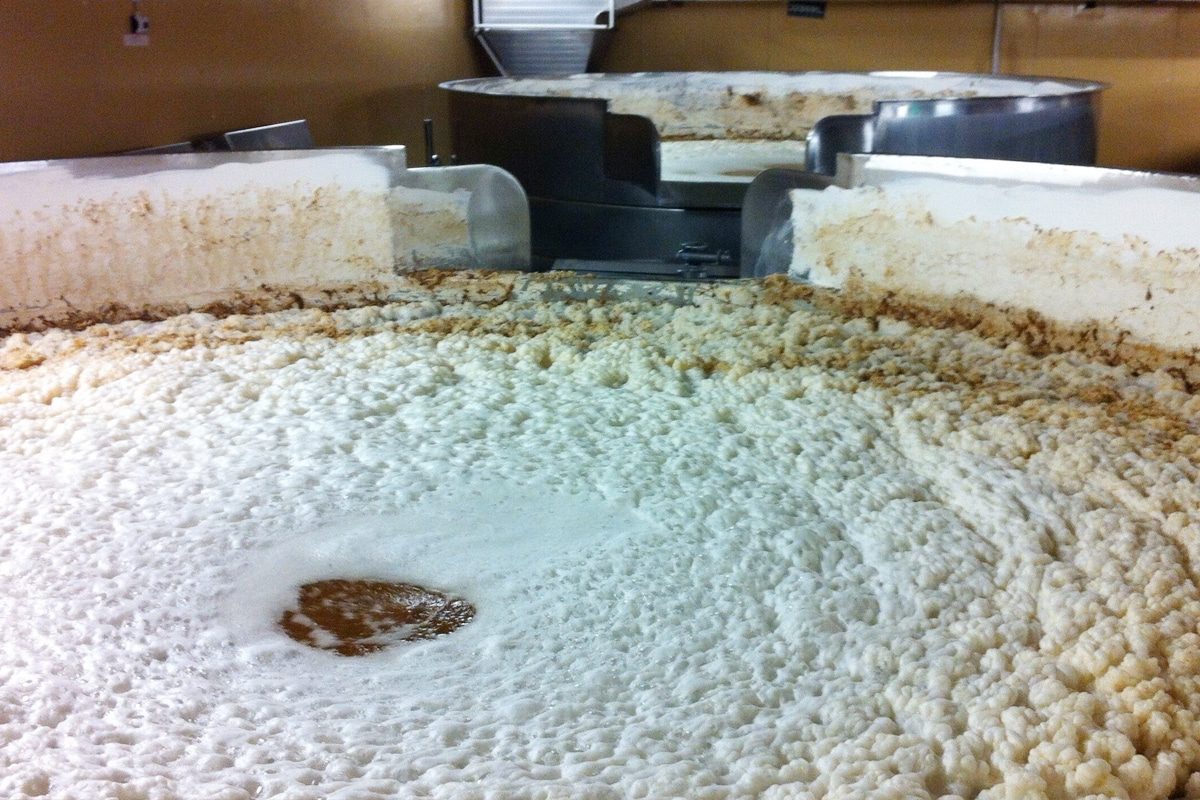
The Fermentation Process
Wort Preparation
Wort preparation is the initial and crucial step in the beer brewing process, setting the stage for successful fermentation. Wort, the liquid extracted from the mashing process, contains the fermentable sugars, proteins, and nutrients that yeast requires for fermentation.
Mashing
- Malt Selection: The process begins with selecting the appropriate malted grains. Barley is the most commonly used grain, but others like wheat, rye, and oats can also be included to create different beer styles.
- Milling: The grains are milled to break the husks and expose the starchy endosperm, facilitating enzymatic activity during mashing.
- Conversion: The milled grains are mixed with hot water in a process called mashing. Enzymes present in the malt, such as amylases, convert the starches into fermentable sugars, mainly maltose.
- Lautering: The mash is then separated into liquid wort and spent grains through lautering. The wort is rinsed with hot water (sparging) to extract as much fermentable sugar as possible.
Boiling
- Sterilization: The wort is boiled to sterilize it, eliminating any unwanted microorganisms that could interfere with fermentation.
- Hop Addition: Hops are added during the boil for bitterness, flavor, and aroma. The timing of hop additions affects the beer’s final characteristics.
- Evaporation: Boiling also helps to evaporate unwanted volatile compounds, such as dimethyl sulfide (DMS), which can impart off-flavors.
Cooling
- Rapid Cooling: After boiling, the wort must be cooled quickly to a temperature suitable for yeast pitching, typically around 18-24°C (64-75°F) for ales and 7-13°C (45-55°F) for lagers.
- Sanitization: Sanitary conditions need to be maintained during the cooling process to prevent contamination. Heat exchangers are commonly used for this purpose.
Yeast Pitching
Yeast pitching involves adding yeast to the cooled wort to initiate fermentation. This step helps ensure a healthy fermentation process and achieve the desired beer characteristics.
Yeast Selection
- Strain Choice: The choice of yeast strain depends on the beer style being brewed. Ale yeasts (Saccharomyces cerevisiae) are typically used for ales, while lager yeasts (Saccharomyces pastorianus) are used for lagers.
- Pure Cultures: Many commercial brewers use pure yeast cultures to ensure consistency and control over fermentation characteristics.
Yeast Propagation
- Starter Cultures: Yeast is often propagated in a starter culture to increase cell counts and ensure vigorous fermentation. This involves growing yeast in a small volume of wort before pitching it into the main batch.
- Oxygenation: Before pitching, the wort is aerated to provide yeast with the necessary oxygen for cell membrane synthesis and growth.
Pitching Rate
- Optimal Cell Count: The amount of yeast pitched, or pitching rate, is crucial. Too little yeast can lead to a sluggish fermentation, while too much can result in off-flavors. Brewers aim for an optimal cell count to ensure efficient and clean fermentation.
Fermentation Stages
Fermentation is the process where yeast converts sugars in the wort into alcohol, carbon dioxide, and other metabolic byproducts that contribute to beer’s flavor and aroma. This process occurs in several stages:
Lag Phase
- Adaptation: After pitching, yeast cells acclimate to their new environment. They absorb nutrients, and oxygen, and begin synthesizing the enzymes needed for fermentation.
- Reproduction: Yeast cells start to reproduce, building up their population to handle the fermentation workload.
Exponential (Log) Growth Phase
- Active Fermentation: Yeast cells rapidly consume fermentable sugars, converting them into ethanol and carbon dioxide. This phase is marked by vigorous bubbling and heat production.
- Byproduct Formation: Besides alcohol and CO2, yeast produces various byproducts like esters, phenols, and higher alcohols, which contribute to the beer’s aroma and flavor profile.
Stationary Phase
- Sugar Depletion: As fermentable sugars become scarce, yeast activity slows. Cells continue to metabolize remaining sugars and secondary metabolites.
- Maturation: During this phase, flavors begin to mature and undesirable compounds, like diacetyl, are reabsorbed by yeast cells, reducing potential off-flavors.
Conditioning and Maturation
- Secondary Fermentation: For some beer styles, a secondary fermentation phase may follow, where the beer is transferred to a secondary vessel. This allows further maturation and flavor development.
- Cold Conditioning: Lagers, in particular, benefit from extended cold conditioning (lagering) to achieve a smooth, clean taste and clarity.
Harvesting and Reuse
- Yeast Collection: After fermentation, yeast can be harvested and reused for subsequent batches. Proper yeast handling and storage will keep the yeast healthy and viable.
The fermentation process is a delicate and intricate sequence of events where yeast transforms wort into beer. Each stage, from wort preparation to yeast pitching and the various phases of fermentation, plays a crucial role in defining the final product’s quality and characteristics. By understanding and controlling these processes, brewers can consistently produce high-quality beer with the desired flavors, aromas, and textures.
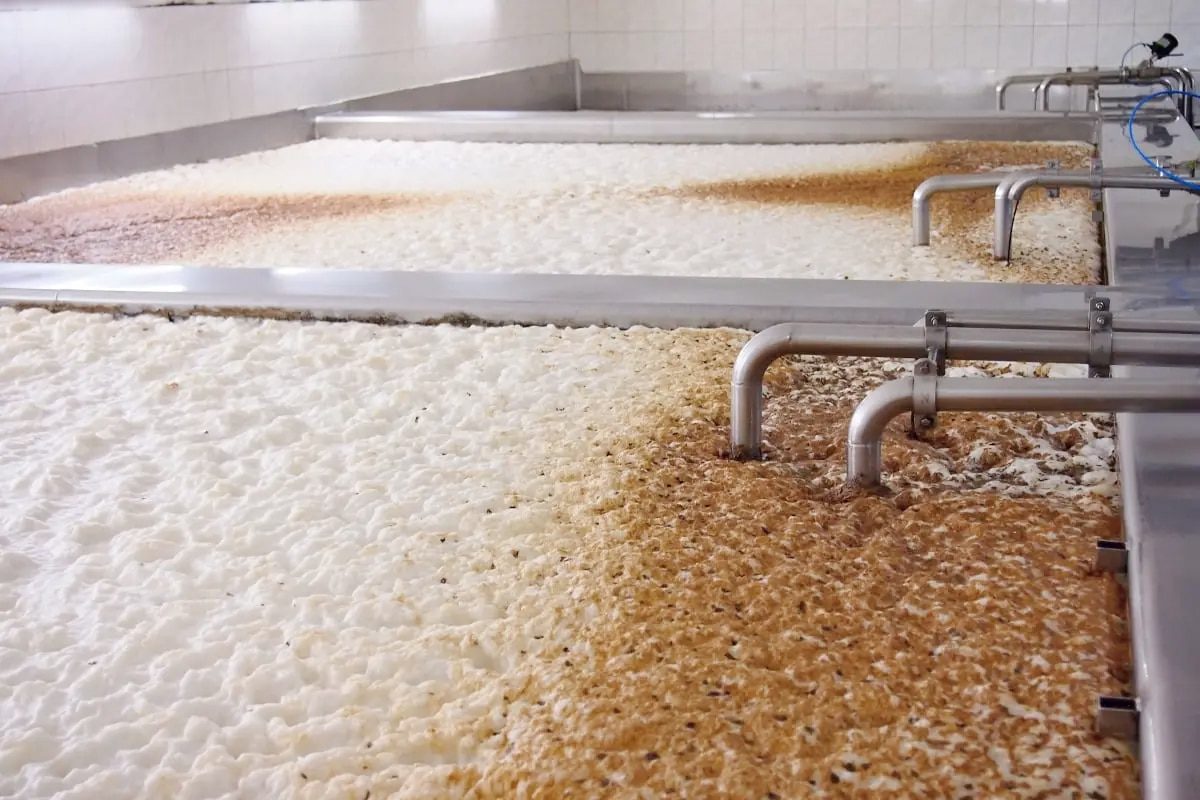
Yeast's Role in Flavor Development
Yeast plays an important role in the development of beer’s flavor profile. The metabolites produced by yeast during fermentation contribute to the complex and diverse flavors and aromas found in different beer styles. This section will explore the key flavor compounds produced by yeast, including esters, phenols, diacetyl, acetaldehyde, alcohol, and carbonation.
Ester and Phenol Production
Esters
- Formation: Esters are produced through the enzymatic reaction between organic acids and alcohols. This process is influenced by various factors, including yeast strain, fermentation temperature, and wort composition.
- Types of Esters: Common esters in beer include ethyl acetate (fruity, solvent-like), isoamyl acetate (banana), and ethyl caproate (apple-like). These compounds contribute to the fruity and floral notes in many beer styles, particularly in ales.
- Influence on Beer Styles: Esters are prominent in styles such as Belgian ales, hefeweizens, and some English ales. Brewers can manipulate ester production by adjusting fermentation conditions, such as temperature and pitching rate, to achieve the desired flavor profile.
Phenols
- Formation: Phenols are aromatic compounds produced by yeast through the decarboxylation of phenolic acids. This production is more common in certain yeast strains, especially those used in Belgian and wheat beers.
- Types of Phenols: Common phenolic compounds include 4-vinyl guaiacol (clove-like) and eugenol (spicy). These contribute to the spicy, clove-like, and smoky flavors of beer.
- Influence on Beer Styles: Phenols are essential in the flavor profile of beers like Belgian saisons, witbiers, and German hefeweizens. The specific yeast strain and fermentation conditions significantly impact the level and type of phenols produced.
Diacetyl and Acetaldehyde
Diacetyl
- Formation: Diacetyl is produced during the early stages of fermentation as a byproduct of amino acid synthesis. It is a vicinal diketone that imparts a buttery or butterscotch flavor to beer.
- Reduction: During the latter stages of fermentation, healthy yeast cells reabsorb and reduce diacetyl to more neutral compounds, such as 2,3-butanediol, which have minimal impact on flavor.
- Control: Proper yeast management, including adequate fermentation time and temperature control, can ensure that diacetyl is reduced to acceptable levels. Diacetyl rests, where the beer is held at a slightly elevated temperature towards the end of fermentation, can help in its reduction.
Acetaldehyde
- Formation: Acetaldehyde is an intermediate compound in the conversion of glucose to ethanol. It can impart a green apple or grassy flavor to beer.
- Reduction: Like diacetyl, acetaldehyde is typically reduced by yeast during the final stages of fermentation to ethanol. High levels of acetaldehyde can indicate incomplete fermentation or stressed yeast.
- Control: Ensuring a healthy fermentation environment and giving yeast sufficient time to complete the fermentation process is key to minimizing acetaldehyde levels in the final beer.
Alcohol and Carbonation
Alcohol
- Production: The primary role of yeast in fermentation is to convert fermentable sugars into ethanol and carbon dioxide. Ethanol is the main alcohol produced, contributing to the beer’s intoxicating effects and the body.
- Higher Alcohols: Yeast also produces small amounts of higher alcohols, such as fusel alcohols, which have more complex flavors and aromas. These can contribute to the overall character of the beer, especially in stronger ales and lagers.
- Impact on Flavor: Ethanol itself has a slightly sweet taste and contributes to the beer’s mouthfeel and perceived warmth. Higher alcohols can add complexity but must be balanced, as excessive amounts can lead to harsh, solvent-like off-flavors.
Carbonation
- Production: Carbon dioxide is a natural byproduct of fermentation. During primary fermentation, some CO2 escapes into the atmosphere, but a significant portion remains dissolved in the beer, creating carbonation.
- Conditioning: Carbonation levels can be adjusted during secondary fermentation or conditioning. This can be achieved naturally through bottle conditioning, where sugar is added before sealing the bottle, allowing yeast to ferment it and produce CO2. Alternatively, forced carbonation can be used, where CO2 is directly injected into the beer.
- Impact on Sensory Experience: Carbonation affects the mouthfeel, aroma release, and overall sensory experience of the beer. The level of carbonation can vary significantly between different beer styles, from the low carbonation of English ales to the high effervescence of Belgian saisons and German wheat beers.
Yeast produces a variety of compounds that determine the sensory characteristics of different beer styles. Through the production of esters, phenols, diacetyl, acetaldehyde, alcohol, and carbonation, yeast transforms simple wort into a complex and flavorful beverage. Understanding and controlling yeast’s metabolic processes allows brewers to craft beers with specific and desired flavor profiles, showcasing the artistry and science behind brewing.
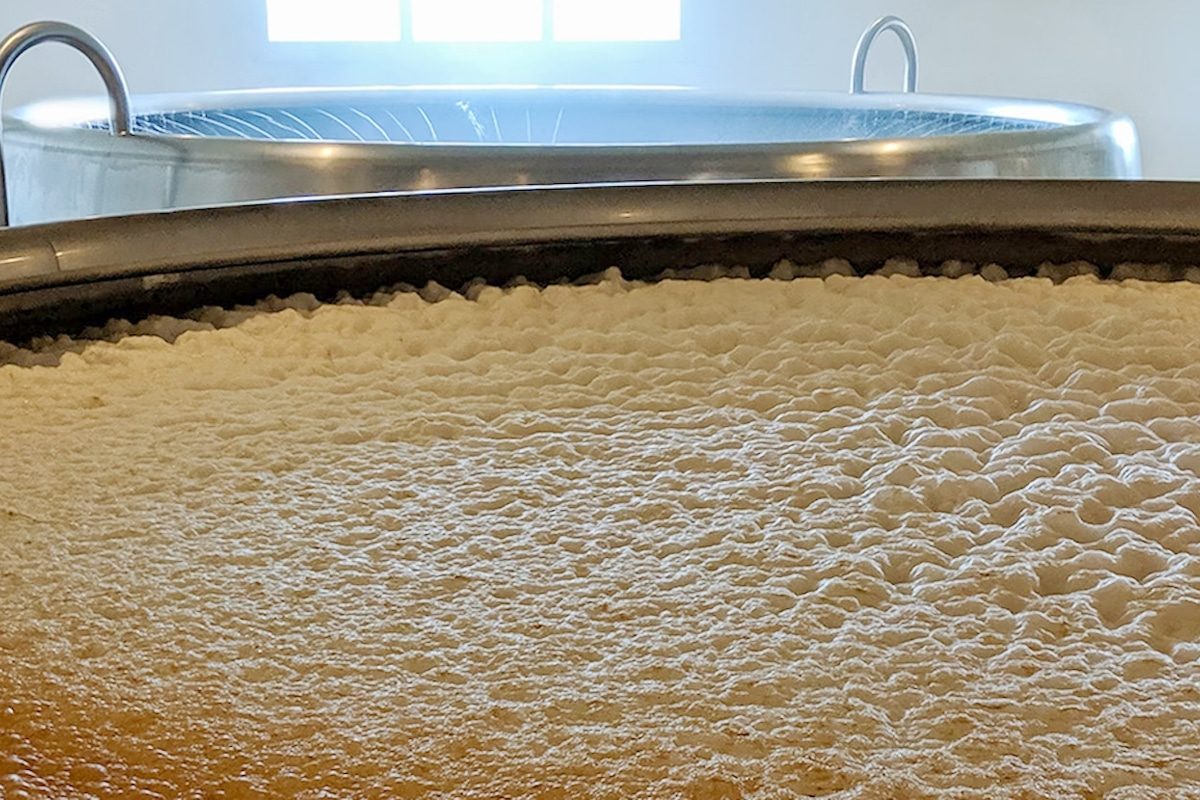
Types of Brewing Yeasts
Yeast is a crucial component in brewing, and the type of yeast used can significantly impact the flavor, aroma, and overall character of the beer. There are several types of brewing yeasts, each suited to different styles of beer and fermentation conditions.
Ale Yeasts (Saccharomyces cerevisiae)
Characteristics
- Top-Fermenting: Ale yeasts are classified as top-fermenting yeasts, meaning they rise to the surface of the wort during fermentation. This characteristic is due to the production of a thick, foamy krausen.
- Fermentation Temperature: Ale yeasts typically ferment at warmer temperatures, ranging from 15-24°C (59-75°F). These higher temperatures result in a faster fermentation process, usually completed within a few days to a week.
- Flavor Profiles: Saccharomyces cerevisiae produces a wide range of flavors and aromas, including fruity esters and spicy phenols. These compounds contribute to the complexity and diversity of ale styles.
Common Ale Styles
- Pale Ale and IPA: Known for their hop-forward profiles, these styles often exhibit fruity and citrusy esters from the yeast.
- Stout and Porter: Dark ales that can have complex flavors, including roasted malt, chocolate, coffee, and subtle fruity esters.
- Belgian Ales: Include styles like Belgian Dubbel, Tripel, and Saison, characterized by spicy phenols and fruity esters produced by specific Belgian yeast strains.
Notable Ale Yeast Strains
- English Ale Yeasts: Known for producing moderate esters and a slightly malty profile, suitable for bitters, porters, and stouts.
- American Ale Yeasts: Typically clean and neutral, allowing hop and malt characteristics to shine, ideal for American Pale Ales and IPAs.
- Belgian Ale Yeasts: Produce high levels of esters and phenols, contributing to the distinctive spicy, fruity, and sometimes funky flavors in Belgian beers.
Lager Yeasts (Saccharomyces pastorianus)
Characteristics
- Bottom-Fermenting: Lager yeasts are classified as bottom-fermenting yeasts because they tend to settle at the bottom of the fermenter during fermentation.
- Fermentation Temperature: Lager yeasts ferment at cooler temperatures, typically between 7-13°C (45-55°F). This slower fermentation process can take several weeks to complete.
- Flavor Profiles: Saccharomyces pastorianus produces clean and crisp flavors with minimal ester and phenol production, resulting in beers with a smooth and refined character.
Common Lager Styles
- Pilsner: A pale, highly carbonated lager with a crisp, clean taste and a pronounced hop bitterness.
- Helles: A malt-forward pale lager from Germany, known for its balanced malt sweetness and subtle hop character.
- Bock: A strong lager with rich malt flavors, often with hints of caramel and toasty notes.
Notable Lager Yeast Strains
- Czech Pilsner Yeast: Produces a clean and crisp profile with balanced hop bitterness, ideal for Czech-style Pilsners.
- Munich Lager Yeast: Known for its malty profile, suitable for Märzen, Dunkel, and other traditional German lagers.
- American Lager Yeast: Typically used for light American lagers, producing a clean, neutral flavor profile with a crisp finish.
Wild and Mixed-Culture Fermentations
Characteristics
- Wild Yeasts: Wild yeast strains, such as Brettanomyces, and bacteria like Lactobacillus and Pediococcus, are used in wild and mixed-culture fermentations. These organisms contribute to complex and unique flavors that are often tart, funky, and earthy.
- Fermentation Environment: Wild and mixed-culture fermentations typically occur in open or semi-controlled environments where multiple microorganisms interact, creating a dynamic and evolving flavor profile.
- Aging: These fermentations often require longer aging periods, sometimes months to years, to fully develop the desired characteristics.
Common Styles Using Wild and Mixed Cultures
- Lambic and Gueuze: Traditional Belgian beers spontaneously fermented with wild yeasts and bacteria, known for their sour and funky profiles.
- Saison: While many Saisons use pure Saccharomyces strains, some are fermented with mixed cultures, adding complexity and depth to the flavor.
- American Wild Ales: A broad category encompassing a variety of experimental and innovative beers fermented with wild yeasts and bacteria, often barrel-aged to enhance complexity.
Notable Wild Yeast and Bacteria Strains
- Brettanomyces (Brett): Known for producing funky, earthy, and sometimes fruity flavors. Commonly used in Lambics, Gueuze, and other wild ales.
- Lactobacillus: A lactic acid bacteria that produces sourness and tangy flavors, commonly used in Berliner Weisse, Gose, and other sour beers.
- Pediococcus: Another lactic acid bacteria that can produce deeper sourness and complexity, often used in conjunction with Brettanomyces in mixed fermentations.
The type of yeast used in brewing has a profound impact on the final beer’s flavor, aroma, and texture. Ale yeasts (Saccharomyces cerevisiae) and lager yeasts (Saccharomyces pastorianus) are the primary yeast strains used in brewing, each contributing distinct characteristics suited to their respective beer styles. Wild and mixed-culture fermentations introduce additional layers of complexity, creating unique and often experimental beers. Understanding the diverse roles and contributions of these yeast types allows brewers to craft a wide range of beer styles, from traditional to innovative, each with its unique flavor profile.
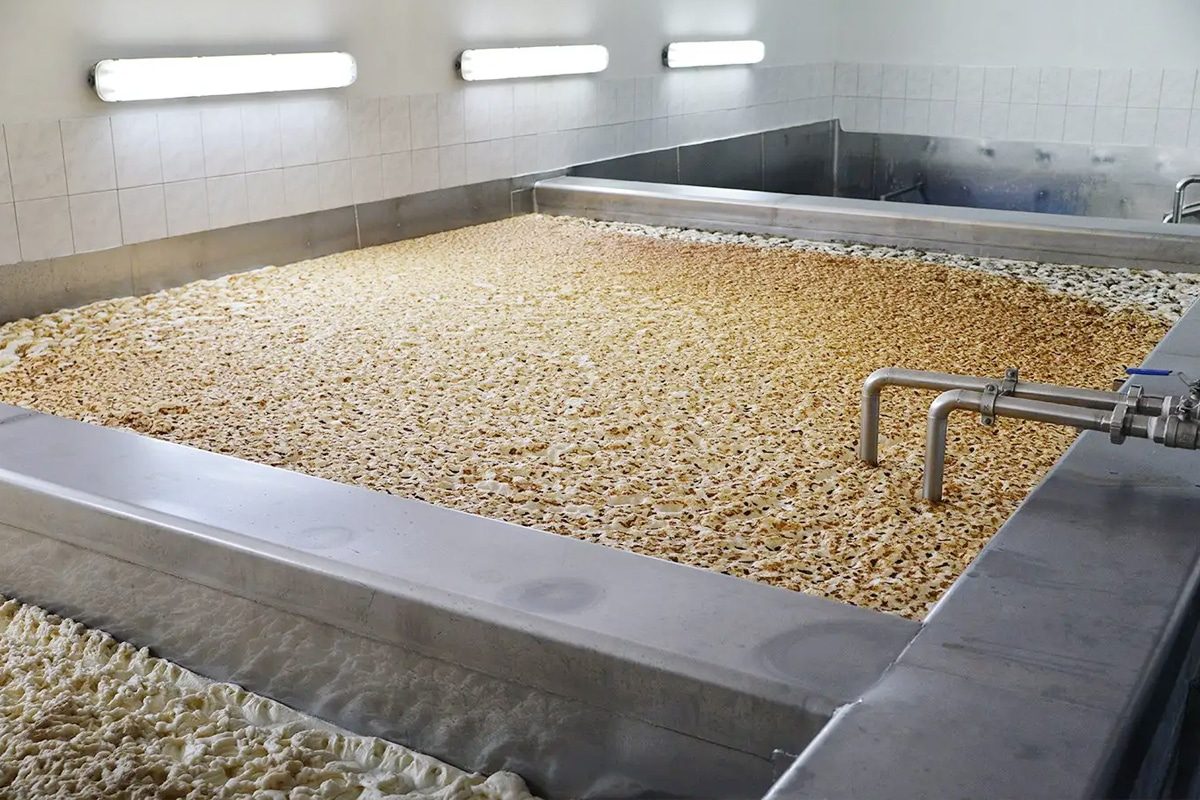
Yeast Management in Brewing
Effective yeast management can ensure stable and high-quality beer production. This involves careful attention to yeast propagation, harvesting and reuse, strain selection, and maintaining yeast health to prevent stress. Each of these aspects will affect the efficiency of fermentation and the final flavor profile of the beer.
Yeast Propagation
Yeast propagation is the process of growing yeast cells to obtain a sufficient quantity for pitching into the wort. Proper propagation techniques ensure a healthy and active yeast population.
Starter Cultures
- Purpose: Starter cultures are used to increase the yeast cell count before pitching into the main wort. This is especially important for high-gravity beers or large batches where a higher yeast population is required.
- Process: A small amount of yeast is initially pitched into a smaller volume of sterilized wort. This starter is then allowed to ferment under controlled conditions, promoting yeast growth and ensuring cell viability.
Aeration and Nutrient Addition
- Oxygenation: Yeast requires oxygen for cell membrane synthesis during the early stages of propagation. Proper aeration of the starter wort ensures that yeast cells can multiply effectively.
- Nutrients: Adding yeast nutrients, such as nitrogen sources, vitamins, and minerals, can enhance yeast growth and health during propagation.
Scaling Up
- Stepwise Propagation: For larger batches, propagation may be done in stages, gradually increasing the volume of wort to ensure a smooth transition and optimal yeast health.
- Monitoring: Regular monitoring of yeast cell count and viability using techniques like microscopy or automated cell counters helps ensure the yeast population is adequate for pitching.
Yeast Harvesting and Reuse
In commercial brewing, yeast is often harvested after fermentation and reused for subsequent batches. This practice can significantly reduce costs and maintain consistency across batches, but it requires careful handling and management.
Harvesting Techniques
- Top Cropping: In ale fermentations, yeast can be harvested from the top of the fermentation tank during active fermentation. This method is traditional for certain styles and yeast strains.
- Bottom Cropping: In both ale and lager fermentations, yeast is often collected from the bottom of the fermenter after fermentation is complete. This method is commonly used in modern breweries.
Yeast Storage
- Short-Term Storage: Harvested yeast can be stored at low temperatures (1-4°C or 34-39°F) to maintain viability until it is reused. Proper sanitation and minimizing exposure to oxygen are crucial.
- Long-Term Storage: For long-term storage, yeast can be preserved using techniques like cryopreservation, where yeast is frozen with cryoprotectants, or freeze-drying.
Viability and Purity Testing
- Microscopy: Regular viability testing using microscopy helps assess the health of harvested yeast. Staining techniques can differentiate live and dead cells.
- Microbiological Testing: Ensuring yeast purity involves testing for contamination by bacteria, wild yeast, or other unwanted microorganisms.
Yeast Strain Selection
Choosing the right yeast strain can help achieve the desired beer style and flavor profile. Different strains have unique characteristics that influence fermentation performance and sensory attributes.
Ale Yeast Strains (Saccharomyces cerevisiae)
- Flavor Contribution: Ale yeast strains can produce a wide range of flavors, from fruity esters to spicy phenols. Selection depends on the desired beer style.
- Fermentation Characteristics: Factors like fermentation temperature tolerance, attenuation (degree of sugar conversion), and flocculation (yeast clumping and settling) are considered.
Lager Yeast Strains (Saccharomyces pastorianus)
- Clean Fermentation: Lager yeasts are chosen for their ability to ferment at cooler temperatures, producing clean, crisp flavors with minimal ester and phenol production.
- Longer Fermentation: Lager yeast strains typically require longer fermentation and conditioning times compared to ale strains.
Specialty and Wild Yeast Strains
- Brettanomyces and Mixed Cultures: For certain styles like Belgian lambics, saisons, and American wild ales, specialty yeasts such as Brettanomyces or mixed cultures with bacteria are used to create unique flavors.
- Hybrid Strains: Advances in yeast breeding and genetic engineering have led to the development of hybrid strains that combine desirable traits from multiple species.
Yeast Health and Stress Management
Keeping your yeast healthy ensures consistent fermentation performance and high-quality beer. Stress management involves providing optimal conditions and addressing factors that can negatively impact yeast vitality.
Nutrient Management
- Essential Nutrients: Yeast requires a variety of nutrients, including nitrogen, amino acids, vitamins (especially B vitamins), and minerals (such as zinc and magnesium). Adequate nutrient levels in the wort support healthy yeast metabolism.
- Supplementation: In some cases, nutrient supplements are added to the wort, particularly for high-gravity beers or when using adjuncts with lower nutrient content.
Oxygenation
- Initial Oxygenation: Providing sufficient oxygen at the start of fermentation is crucial for yeast growth and cell membrane synthesis. This is typically done by aerating or oxygenating the wort before pitching.
- Avoiding Oxygen Exposure: After this initial period, maintaining anaerobic conditions prevents odors and oxidation.
Temperature Control
- Optimal Fermentation Temperature: Each yeast strain has an optimal temperature range for fermentation. Maintaining this range helps prevent stress and promotes efficient fermentation.
- Temperature Shocks: Avoiding sudden temperature changes is important, as temperature shocks can stress yeast and negatively impact fermentation performance.
pH and Osmotic Stress
- pH Levels: Yeast performs best within a specific pH range (typically 4.0-5.0). Monitoring and adjusting wort pH can help maintain yeast health.
- Osmotic Pressure: High sugar concentrations can cause osmotic stress. Gradual feeding of wort (step-feeding) in high-gravity fermentations can mitigate this stress.
Sanitation and Contamination Control
- Clean Equipment: Maintaining clean and sanitized equipment prevents contamination by unwanted microorganisms that can compete with or harm the yeast.
- Sterile Practices: Adopting sterile handling practices during yeast propagation, pitching, and harvesting helps ensure yeast health and purity.
Effective yeast management is a cornerstone of successful brewing. By understanding and optimizing yeast propagation, harvesting and reuse, strain selection, and health management, brewers can ensure consistent fermentation performance and produce high-quality beers. Each step in yeast management contributes to the overall success of the brewing process, from initial fermentation to the final flavor profile of the beer.
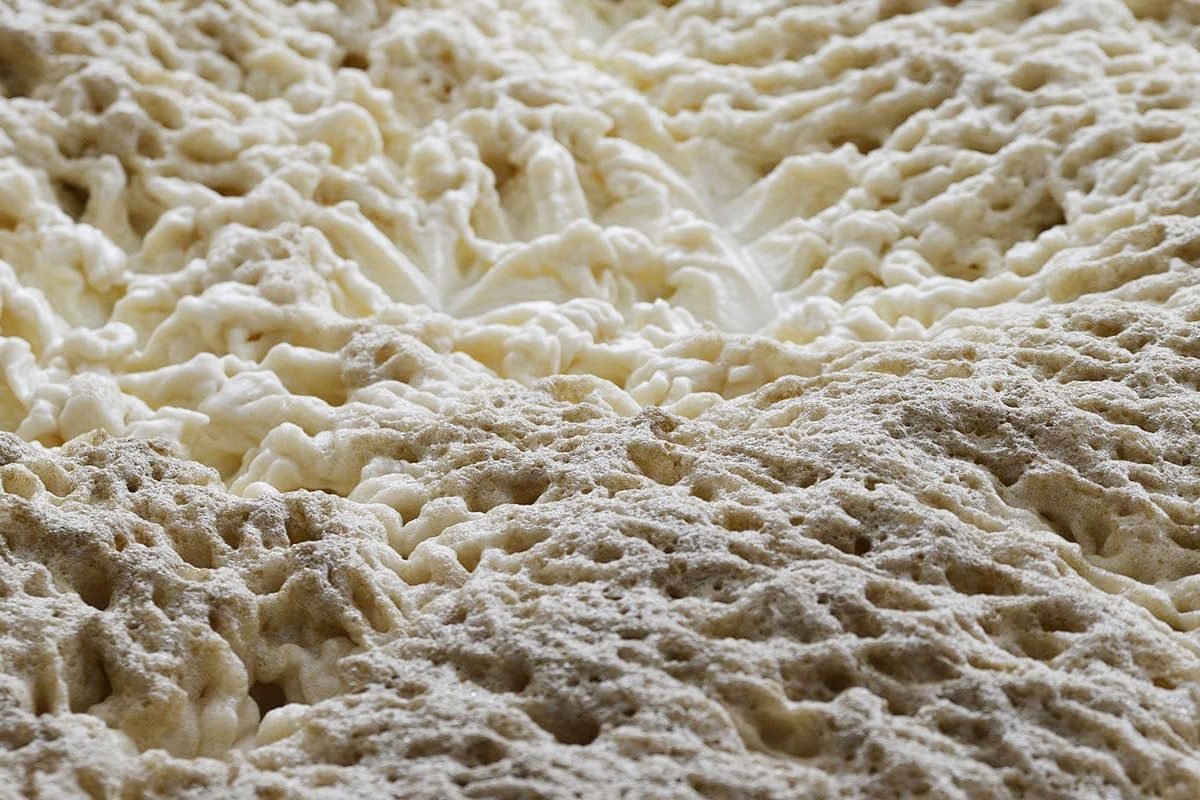
Factors Affecting Yeast Performance
Yeast performance during beer fermentation is influenced by several critical factors that must be carefully controlled to ensure optimal fermentation and the production of high-quality beer. These factors include temperature, oxygen and nutrients, pH levels, and pitching rate. Understanding and managing these variables can help brewers achieve consistent and desirable fermentation outcomes.
Temperature
Temperature is one of the most crucial factors affecting yeast performance. It influences yeast metabolism, fermentation rate, and the production of flavor compounds.
Optimal Temperature Ranges
- Ale Yeasts (Saccharomyces cerevisiae): Ale yeasts typically ferment best at temperatures between 15-24°C (59-75°F). Within this range, different strains may have specific preferences. Higher temperatures within this range can lead to increased ester and phenol production, resulting in more pronounced fruity and spicy flavors.
- Lager Yeasts (Saccharomyces pastorianus): Lager yeasts prefer cooler temperatures, usually between 7-13°C (45-55°F). These lower temperatures result in a slower fermentation process but produce cleaner and crisper flavor profiles with minimal ester and phenol production.
Effects of Temperature Deviations
- High Temperatures: Fermenting at temperatures above the optimal range can lead to increased production of unwanted byproducts such as fusel alcohols, which can impart harsh, solvent-like flavors. Additionally, high temperatures can stress the yeast, reducing its viability and fermentation efficiency.
- Low Temperatures: Fermenting below the optimal range can slow down or stall fermentation, resulting in incomplete sugar conversion and potential off-flavors due to stressed yeast cells struggling to function effectively.
Oxygen and Nutrients
Yeast requires specific conditions and nutrients to perform effectively during fermentation.
Oxygen
- Initial Oxygenation: Oxygen is essential for yeast during the initial stages of fermentation. It is required for the synthesis of sterols and unsaturated fatty acids, which are critical for yeast cell membrane integrity and function. Proper aeration or oxygenation of the wort before pitching helps ensure a healthy yeast population.
- Anaerobic Conditions: After the initial oxygenation, yeast ferments anaerobically (without oxygen) to produce alcohol and carbon dioxide. Maintaining anaerobic conditions prevents oxidation of the beer, which can cause unpleasant flavors.
Nutrient Requirements
- Nitrogen: Yeast needs nitrogen for protein synthesis and cellular growth. Nitrogen is typically supplied in the form of amino acids and ammonium ions present in the wort. Low nitrogen levels can result in sluggish fermentation and the production of off-flavors.
- Vitamins and Minerals: Yeast requires various vitamins (such as B vitamins) and minerals (including zinc and magnesium) to support enzymatic activities and overall cellular health. Wort nutrient profiles should be adequate to meet these needs, and supplementation may be necessary in some cases.
pH Levels
The pH level of the wort and fermenting beer significantly impacts yeast activity and fermentation performance.
- Optimal pH Range: The ideal pH range for yeast fermentation is typically between 4.0 and 5.0. Within this range, yeast cells can efficiently carry out metabolic processes and maintain cellular health.
- Acidic Conditions: pH levels below 4.0 can inhibit yeast growth and activity, leading to slow or stalled fermentation. Extremely low pH can also increase the risk of contamination by acid-tolerant bacteria.
- Alkaline Conditions: pH levels above 5.0 can reduce the efficiency of yeast metabolism and enzyme function. Additionally, higher pH levels can promote the growth of spoilage microorganisms.
- Monitoring and Adjusting pH: Brewers often monitor the pH levels throughout the brewing process, from mashing to fermentation. Adjustments can be made using acid or base additions to maintain the optimal pH range for yeast performance.
Pitching Rate
The pitching rate, or the amount of yeast added to the wort, is a critical factor influencing fermentation efficiency and beer quality.
Optimal Pitching Rates
- Ale Yeasts: For ale fermentations, a typical pitching rate is around 0.75 million cells per milliliter per degree Plato (a measure of wort concentration). This ensures sufficient yeast cells to rapidly initiate fermentation and complete it efficiently.
- Lager Yeasts: Lager fermentations usually require a higher pitching rate, around 1.5 million cells per milliliter per degree Plato, due to the cooler fermentation temperatures and slower yeast activity.
Effects of Pitching Rate Deviations
- Under-Pitching: Insufficient yeast cells can lead to a slow fermentation start, increased lag phase, and higher risk of contamination. Under-pitching can also stress the yeast, resulting in the production of off-flavors and incomplete attenuation (sugar conversion).
- Over-Pitching: Excessive yeast cells can lead to overly rapid fermentation, potentially reducing the development of desirable flavor compounds. Over-pitching can also lead to yeast autolysis, where dead yeast cells break down and release off-flavors into the beer.
Understanding and controlling the factors that influence yeast performance (temperature, oxygen and nutrients, pH, and pitching rate) can help in successful beer fermentation. By maintaining optimal conditions for yeast activity, brewers can ensure consistent, efficient fermentation and produce high-quality beers with the desired flavor profiles. Managing these factors effectively allows for the creation of a wide range of beer styles, each with its unique characteristics, showcasing the art and science of brewing.
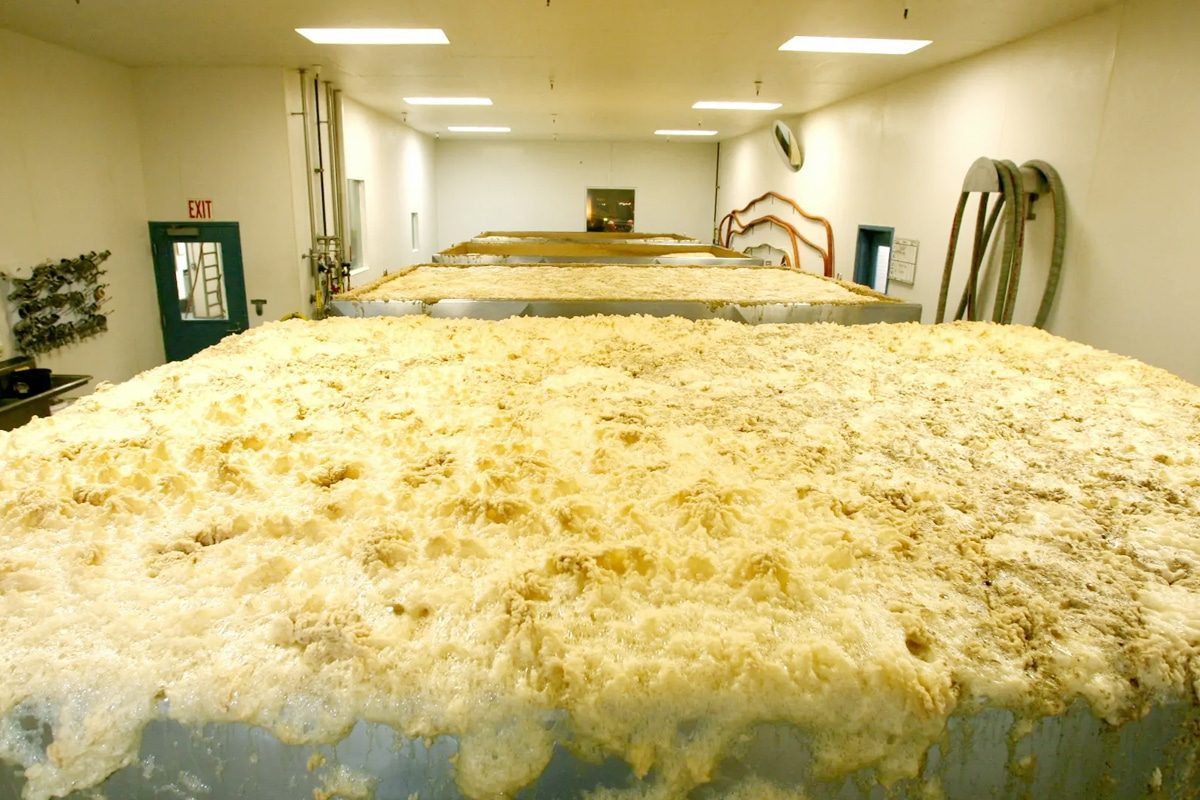
Common Yeast-Related Issues and Troubleshooting
Yeast is a critical component in beer fermentation, but various issues can arise that impact the quality and consistency of the final product. Understanding common yeast-related problems and how to troubleshoot them is essential for any brewer.
Stuck Fermentation
Stuck fermentation occurs when yeast activity ceases before all fermentable sugars are converted into alcohol and carbon dioxide. This can result in an under-attenuated beer with residual sweetness and lower alcohol content.
Causes
- Insufficient Yeast Pitching: Not enough yeast cells were pitched to handle the fermentation workload.
- Nutrient Deficiencies: Lack of essential nutrients such as nitrogen, vitamins, and minerals can impair yeast performance.
- Temperature Issues: Fermentation temperature is too low, slowing yeast activity, or too high, causing yeast stress and premature flocculation.
- High Gravity Worts: High sugar concentrations can create osmotic pressure, stressing the yeast.
- Oxygen Deficiency: Insufficient oxygen during the initial stages of fermentation can impede yeast growth and metabolism.
Troubleshooting
- Increase Yeast Pitching Rate: Ensure an adequate pitching rate by using a yeast calculator to determine the optimal cell count based on wort gravity and volume.
- Nutrient Addition: Supplement the wort with yeast nutrients containing nitrogen, vitamins, and minerals to support yeast health.
- Temperature Control: Maintain consistent fermentation temperatures within the optimal range for the yeast strain. If the temperature is too low, gently raise it to restart fermentation.
- Re-pitching Yeast: If fermentation is stuck, consider re-pitching with a fresh, active yeast starter to restart the process.
- Oxygenation: Ensure proper oxygenation of the wort before pitching yeast. For stuck fermentations, aerating the wort carefully can sometimes help restart yeast activity.
Off-Flavors
Off-flavors are undesirable tastes and aromas in beer that can result from various issues during fermentation. Common off-flavors include diacetyl, acetaldehyde, sulfur compounds, and phenolic flavors.
Diacetyl (Buttery Flavor)
- Causes: Produced as a byproduct of amino acid synthesis, diacetyl is typically reabsorbed by yeast during the latter stages of fermentation. However, rapid cooling or insufficient fermentation time can leave diacetyl in the beer.
- Troubleshooting: Allow the beer to rest at a slightly higher temperature (diacetyl rest) for a few days towards the end of fermentation to enable yeast to reabsorb diacetyl.
Acetaldehyde (Green Apple Flavor)
- Causes: Acetaldehyde is an intermediate compound in ethanol production. Incomplete fermentation or rapid yeast flocculation can leave acetaldehyde in the beer.
- Troubleshooting: Ensure complete fermentation by giving yeast sufficient time to convert acetaldehyde to ethanol. Maintaining optimal fermentation temperatures and yeast health can also help.
Sulfur Compounds (Rotten Egg Smell)
- Causes: Produced by some yeast strains during fermentation, especially lagers. Sulfur compounds are usually reabsorbed during conditioning.
- Troubleshooting: Allow sufficient lagering time to enable sulfur compounds to dissipate. Proper yeast selection and fermentation management can reduce sulfur production.
Phenolic Flavors (Clove, Band-Aid)
- Causes: Phenolic flavors can be produced by certain yeast strains or result from contamination by wild yeasts or bacteria.
- Troubleshooting: Use yeast strains appropriate for the desired beer style. Maintain strict sanitation practices to prevent contamination. If phenolic flavors are inappropriate for the beer style, consider discarding the batch and improving cleanliness in future brews.
Yeast Autolysis
Yeast autolysis occurs when yeast cells die and break down, releasing intracellular contents into the beer. This can impart off-flavors such as meaty, rubbery, or soy sauce-like aromas.
Causes
- Extended Contact Time: Leaving beer on the yeast cake for too long, especially at warm temperatures, can lead to autolysis.
- High Fermentation Temperatures: Excessively high temperatures can stress yeast and accelerate autolysis.
- Nutrient Deficiencies: Lack of nutrients can cause yeast to die prematurely.
Troubleshooting
- Timely Racking: Transfer beer off the yeast cake to a secondary fermenter or bottle/keg promptly after primary fermentation is complete.
- Temperature Control: Maintain appropriate fermentation temperatures to prevent yeast stress.
- Nutrient Management: Ensure the wort is nutrient-rich to support yeast health and longevity.
Contamination
Contamination by unwanted microorganisms such as wild yeast, bacteria, or mold can spoil beer, resulting in off-flavors, sourness, and haze.
Causes
- Poor Sanitation: Inadequate cleaning and sanitizing of brewing equipment and surfaces.
- Cross-Contamination: Using contaminated ingredients or transferring beer in a contaminated environment.
- Airborne Contaminants: Exposure to airborne microbes during fermentation or packaging.
Troubleshooting
- Sanitation Protocols: Implement rigorous cleaning and sanitizing procedures for all equipment, surfaces, and utensils. Use food-grade sanitizers such as iodophor or Star San.
- Closed Fermentation Systems: Use closed or airlock fermentation systems to minimize exposure to airborne contaminants.
- Quality Control: Regularly test samples for microbial contamination using microbiological plating or other methods. Discard contaminated batches to prevent cross-contamination.
Effective yeast management involves understanding and addressing common yeast-related issues to ensure a successful fermentation and high-quality beer. By identifying the causes of problems such as stuck fermentation, off-flavors, yeast autolysis, and contamination, and implementing appropriate troubleshooting techniques, brewers can maintain optimal yeast performance and produce consistently excellent beers. Ensuring proper yeast handling, fermentation conditions, and sanitation practices can help achieve the desired results in brewing.
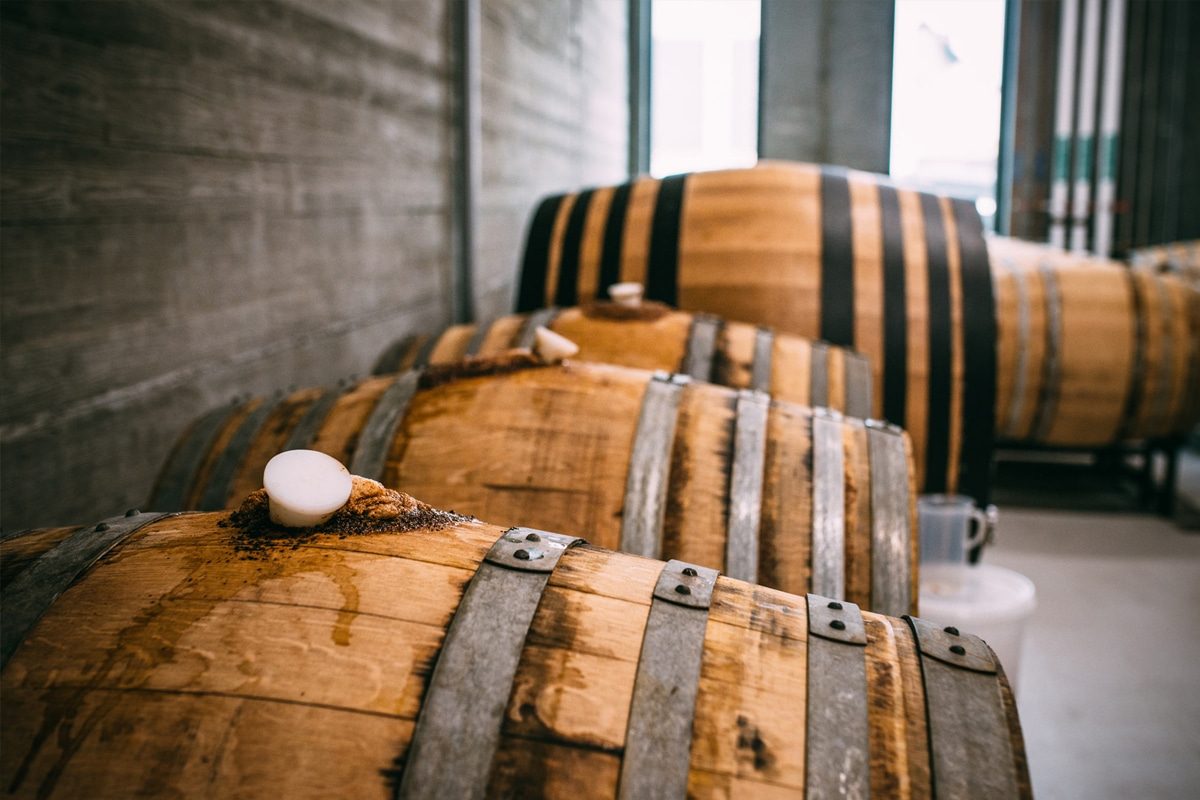
Summary
Yeast plays a crucial role in beer fermentation, transforming wort into beer by metabolizing sugars into alcohol and carbon dioxide. This single-celled microorganism not only facilitates the fermentation process but also contributes significantly to the flavor, aroma, and overall character of the beer. Different types of yeast, including ale yeasts (Saccharomyces cerevisiae), lager yeasts (Saccharomyces pastorianus), and wild strains, each impart unique qualities to various beer styles.
Effective yeast management involves careful propagation, harvesting, strain selection, and maintaining optimal conditions such as temperature, oxygen levels, pH, and nutrient availability. Common yeast-related issues, such as stuck fermentation, off-flavors, autolysis, and contamination, require diligent troubleshooting and control. Understanding and managing the complexities of yeast performance enables brewers to produce high-quality, consistent beers, showcasing the intricate balance of science and art in brewing.
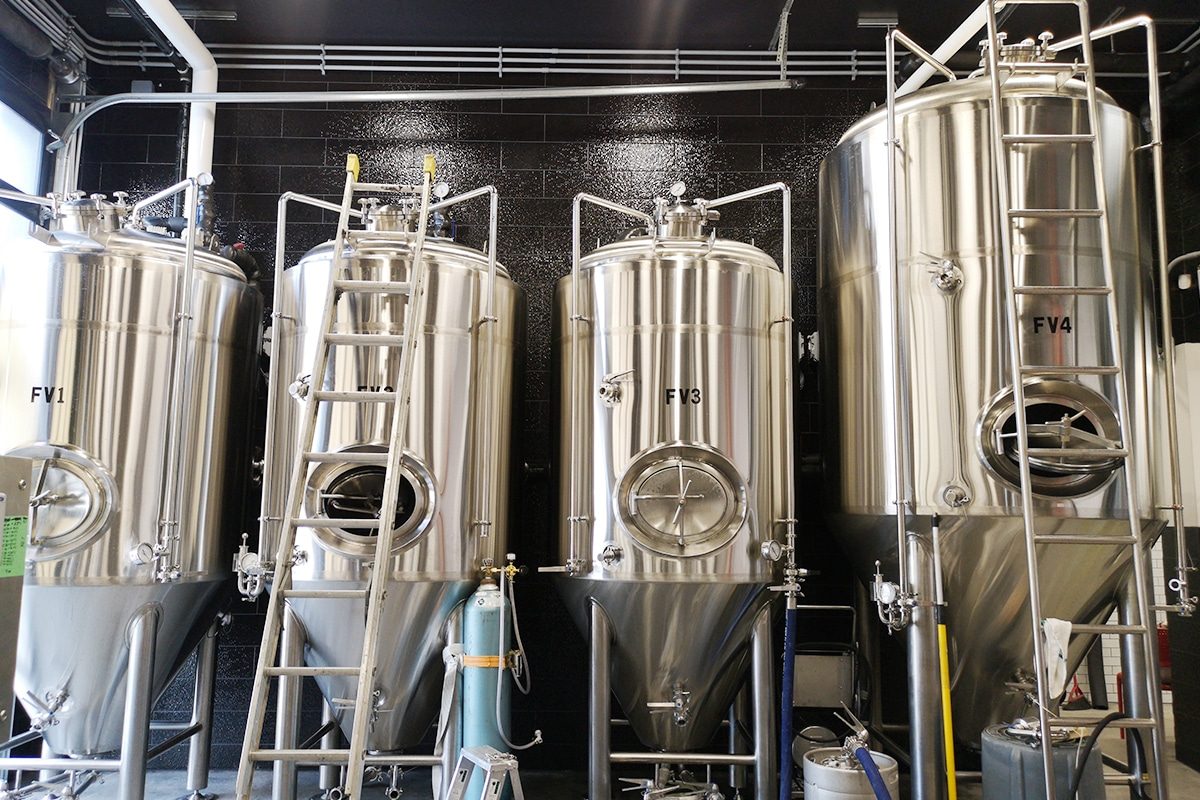
Get A Turnkey Brewery Solutions
At ZYB Craft, we understand that achieving the perfect beer requires not only the finest ingredients but also state-of-the-art brewing equipment and expert guidance. As a professional brewery equipment provider, we offer comprehensive turnkey solutions designed to meet the unique needs of each brewer, from startups to established breweries. Our solutions encompass everything from advanced fermentation systems, high-efficiency wort production equipment, and precise yeast management tools to ensure optimal fermentation performance.
Our team of experts is dedicated to helping you select the right equipment, tailored to your specific brewing requirements, to enhance yeast performance and achieve consistent, high-quality results. We provide seamless integration of all brewing processes, including automated control of temperature, oxidation, and nutrient management, which helps maintain yeast health and maximize beer quality.
Partner with ZYB Craft for your brewery setup and experience the benefits of professional, turnkey solutions that streamline your brewing operations, allowing you to focus on crafting exceptional beer. Let us help you bring your brewing vision to life with precision and excellence.



